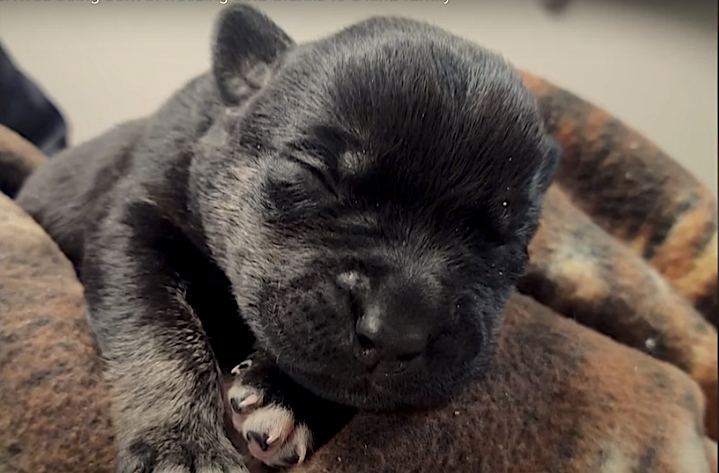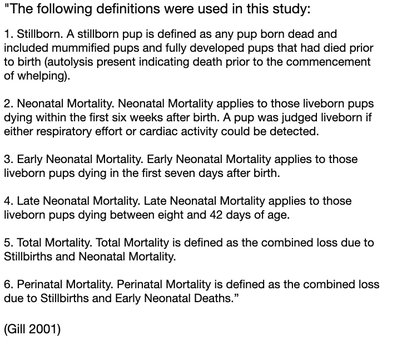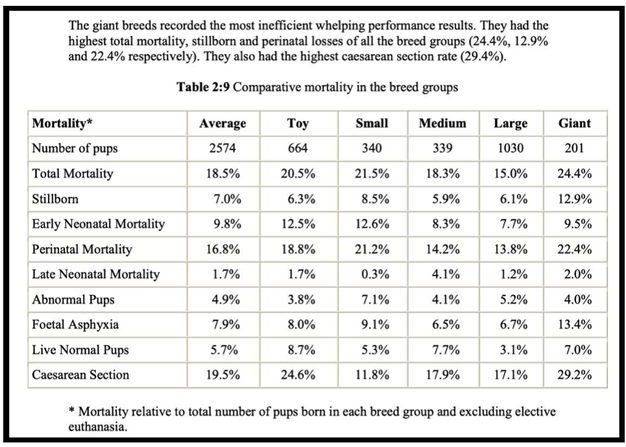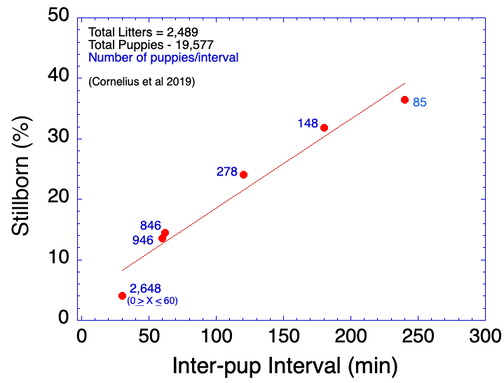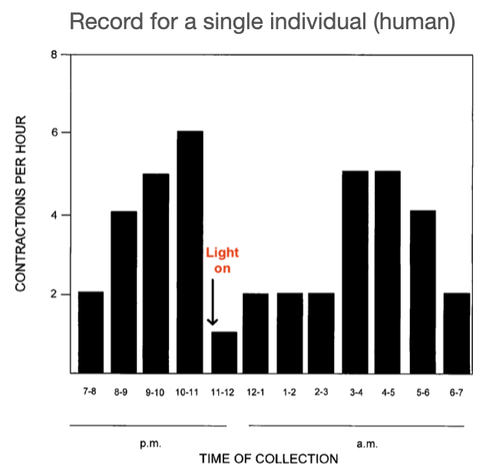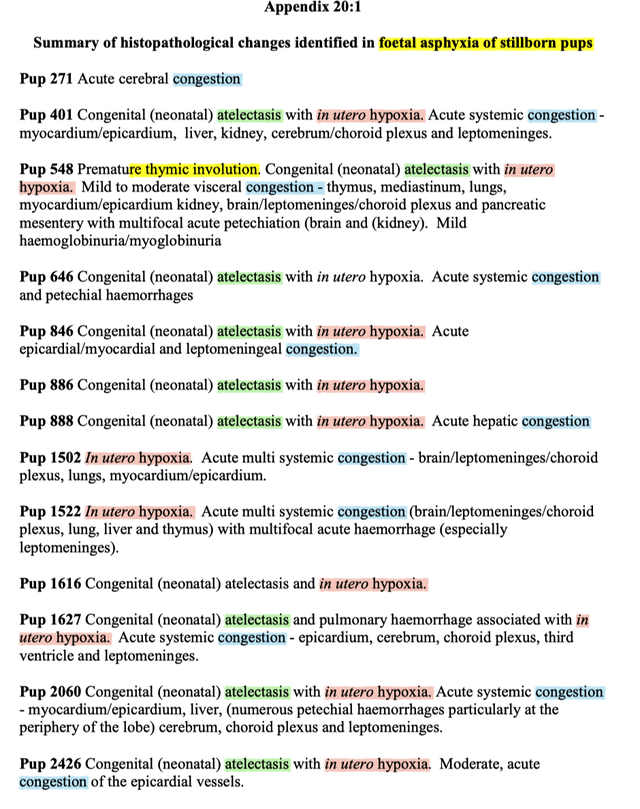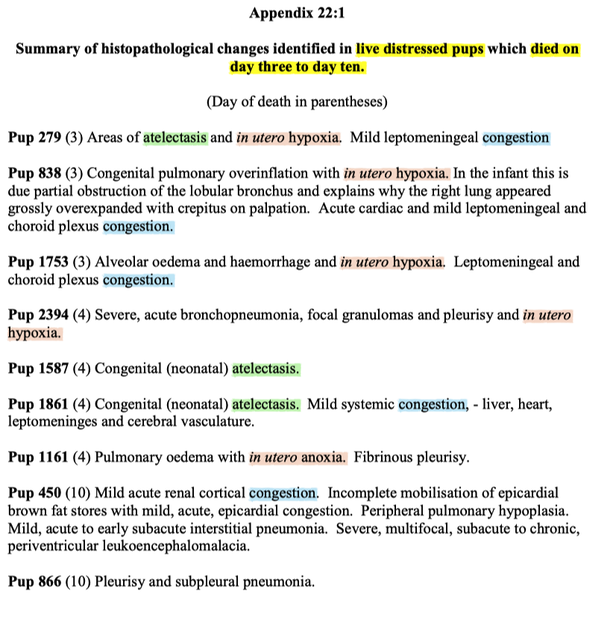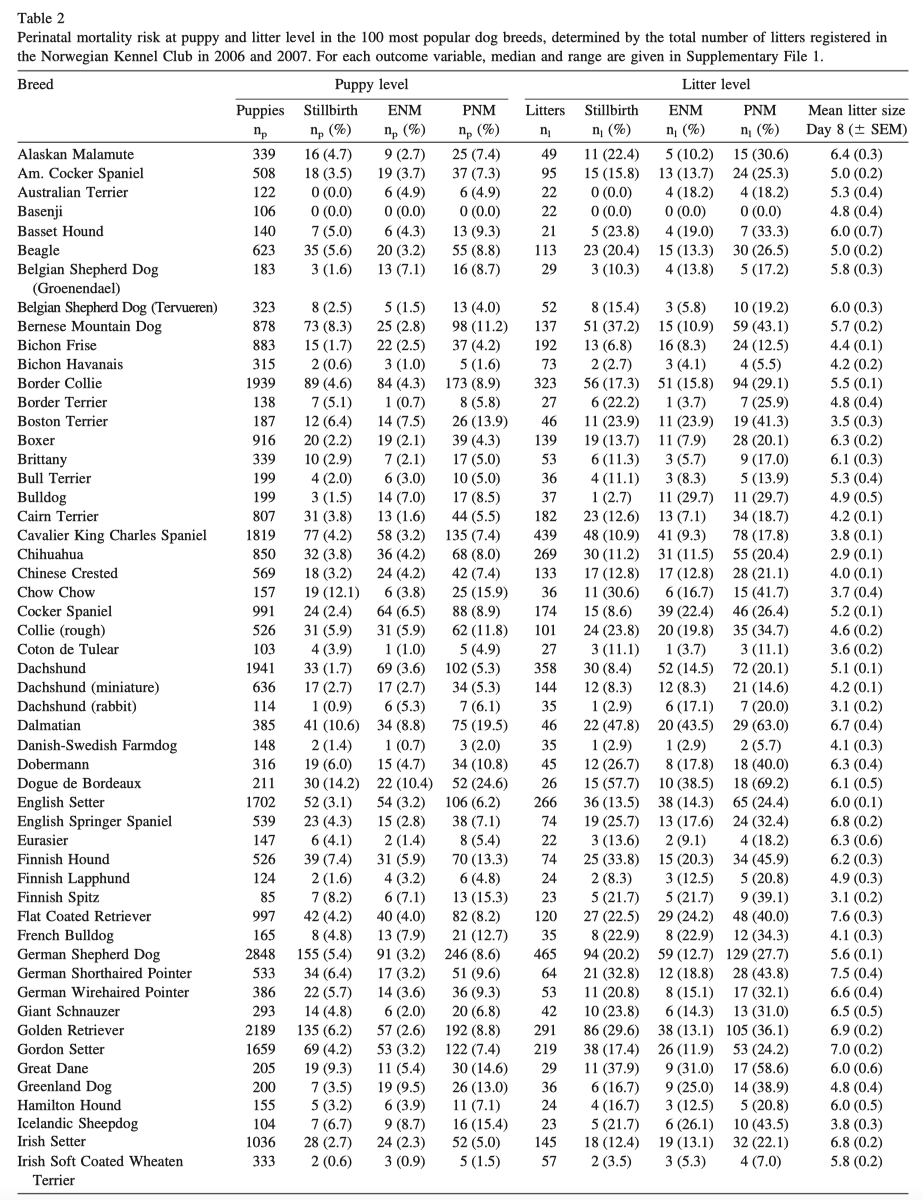| Anyone that has been breeding very long has had the experience of excitedly welcoming a new litter of puppies into the world, only to have a beautiful, perfectly-formed puppy born dead. Oftentimes, there are puppies with signs of life but are struggling. Some of these can be revived but, sadly, some cannot despite the best efforts of the breeder. Perhaps the worst is loss is a puppy that seems to be doing well for several days, then without warning is found dead in the whelping box. This mortality represents a very significant loss of the puppies produced by breeders. In fact, the statistics are shocking. |
What is causing such high rates of stillborn puppies?
Excluding the puppies with evident abnormality, the necropsy information for the puppies in Gill's (2001) study (see below) shows that the stillborn puppies suffered from in utero hypoxia - they ran out of oxygen before they were born. In fact, even the puppies that were born live and lived for days also often show evidence of hypoxia (inadequate oxygen) in utero (from Gill 2001). (See necropsy reports below)
This graph shows that a longer interval between puppies increases the risk of stillbirth. (The first point on the graph represents puppies with inter-pup intervals from 0 to 60 minutes; the marker is placed at 30 min.)
So, as the time between births increases, the proportion of stillborn puppies increases.
But why does birth of puppies take so long?
The pace of labor is determined by the contractile behavior of the uterus. Prolonged labor is the result of "uterine inertia", which is a failure of the uterus to contract with sufficient strength and frequency to expel the puppy.
So finally, we can ask the critical question:
What causes uterine inertia and how can we prevent it?
When I ran into this issue of high puppy mortality, I was surprised that it had not been resolved long ago. After all, we can determine cause of death, and for most puppies it seems to be a matter of physiology (hypoxia), not a mysterious pathogen or anatomical abnormality. The high mortality of puppies has been well documented, but several studies that searched for a cause came up empty.
If puppies are suffocating in utero because of uterine inertia, then that's the problem we need to solve.
I found various suggestions of possible causes (e.g., overstretching of the uterine muscle, exhaustion of the uterus, but no explanation in the canine or veterinary literature.
However, I stumbled on what I think is the answer.
Uterine contractions during labor are affected by light.
Here are some representative data for uterine contractions during labor in a human. Starting in a dark room, the frequency of contractions increases by the hour. If a light is turned on for an hour, the contraction rate drops dramatically to only 1/hr. When the light is turned off, contractions recover slowly.
But does this also happen in dogs? In fact, it looks like it does.
My colleagues and a group of cooperative breeders have found that bitches kept in a room with lights on typically produce a couple of puppies, but then there is often a prolonged interval before the next puppy appears. In the meantime, the bitch is typically restless and producing strong abdominal contractions. When puppies are produced, the intervals between them can be protracted - an hour or two, or sometimes many hours or even the next day.
But we have found that when the whelping box is in a dark room - a VERY dark room - the bitch is relaxed and calm, and the puppies are expelled quickly and easily, without straining and abdominal contractions. The pups are vigorous as soon as they emerge from the membranes, and the bitch tends to each without assistance.
Most notably, as long as the whelping room stays dark, there are no stillborns or puppies needing reviving.
However, if a light are turned on, even very briefly, the strong abdominal contractions resume, but there are long intervals between puppies. Some of these puppies are born with fluid in the respiratory tract or need to be revived, and some can be stillborn.
|
Could reducing puppy mortality be as simple as whelping in the dark? I think it can be.
After all, dogs left to their own devices dig a den for their pups, and they are typically born at night. When we bring dogs indoors to manage their reproduction, they are denied this opportunity, although who hasn't found their pregnant bitch under the bed or in the back of a closet when the time comes near for whelping. For tens of thousands of years, dogs have produced their puppies in the darkness of an underground den, and we should expect that their reproductive physiology is suited for this. The consequence of whelping in the light instead of darkness is high puppy mortality. Natural selection would weed out the non-conformers rather quickly. |
ICB Uterine Inertia and Neonatal Mortality If you are interested in following the progress of this study or would like to participate with your own upcoming litter, please join the Facebook group created for this project at - https://www.facebook.com/groups/uterineinertiaindogs |
The significance of this doesn't escape me. We will need to do some careful studies to verify the effects of light and darkness on whelping, and there is a long list of questions about effects on physiology and behavior that should be addressed. But as problems go, this one is potentially very easy to solve. And it will result in more puppies. That's definitely a win.
This is typical for bitches whelping in the dark. The bitch is relaxed and not straining. The puppy emerges quickly and mom takes caresof it to remove membranes and lick clean. (Watch carefully!)
NECROPSY REPORTS
Pathology of puppies that survived up to 10 days
Pathology of Puppies That Survived < 48h
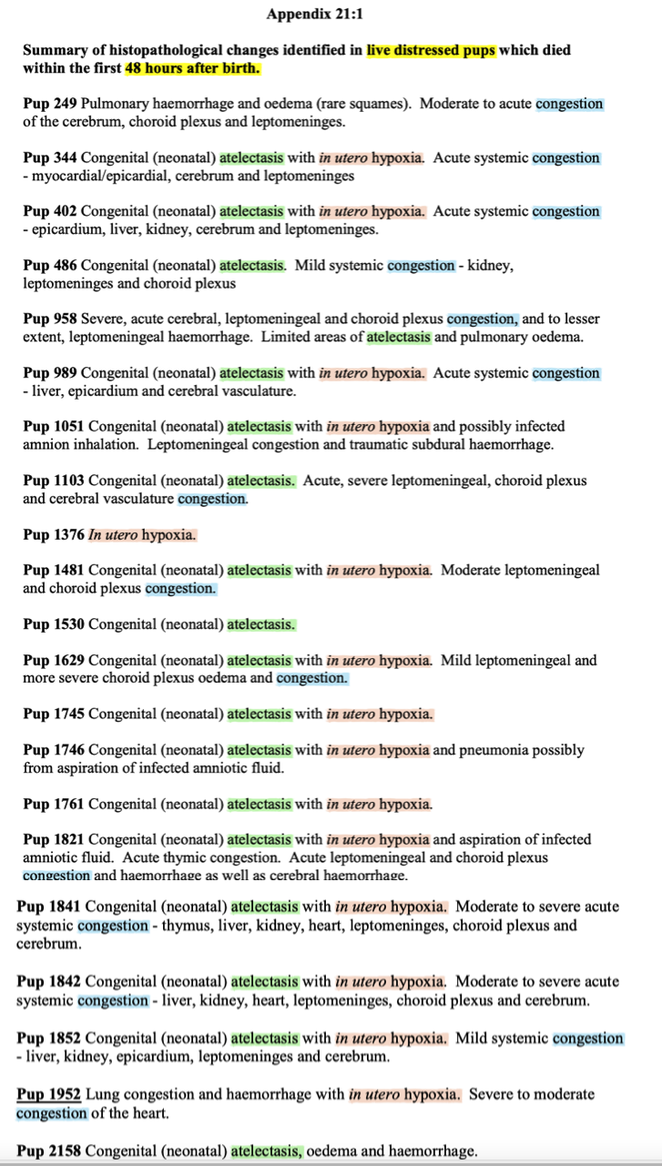
Cornelius AJ et al, 2019. Identifying risk factors for canine dystocia and stillbirths. Theriogenology 128: 201-206.
Gill, MA, 2001. Perinatal and late neonatal mortality in the dog. PhD Thesis, University of Sydney.
Tonnessen R et al, 2012. Canine perinatal mortality: a cohortt study of 224 breeds. Theriogenology 77: 1788-1801.
ICB's online courses
***************************************
Visit our Facebook Groups
ICB Institute of Canine Biology
...the latest canine news and research
ICB Breeding for the Future
...the science of animal breeding
